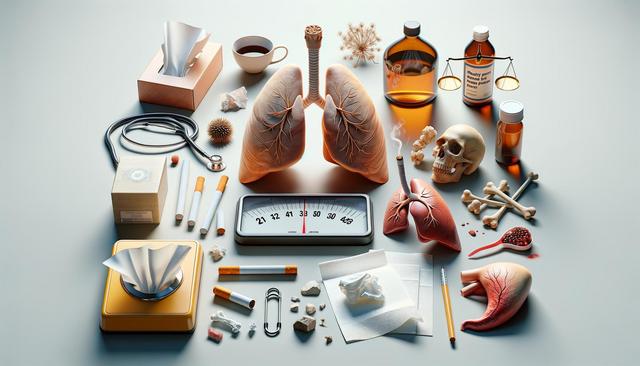Habit 1: Sedentary Lifestyle
Leading a sedentary lifestyle is one of the most common risk factors associated with stroke. When physical activity is limited, it can lead to weight gain, high blood pressure, and poor cardiovascular health—all of which are closely linked to stroke risk. People who spend long hours sitting at a desk, watching television, or avoiding exercise may unknowingly be putting themselves at greater risk.
Regular physical activity is essential for maintaining a healthy circulatory system. It helps regulate blood pressure, improve heart function, and reduce cholesterol levels. Without movement, blood flow can become sluggish, increasing the chance of clot formation, which is a leading cause of stroke. To counteract this habit, consider incorporating the following into your routine:
- Take short walks during breaks throughout the day
- Engage in moderate-intensity exercise for at least 150 minutes per week
- Use a standing desk or stretch regularly when working
Even small changes in daily activity can significantly reduce stroke risk over time. Addressing this habit early can lead to better long-term health outcomes.
Habit 2: Poor Dietary Choices
A diet high in processed foods, saturated fats, and added sugars can have a serious impact on stroke risk. Consuming excessive salt and unhealthy fats can elevate blood pressure and cholesterol levels, two major contributors to strokes. In particular, diets that lack fruits, vegetables, whole grains, and lean proteins often lead to imbalances in nutrients and increased inflammation in the body.
Nutrition plays a direct role in maintaining the health of blood vessels and the heart. A poor diet can lead to conditions such as obesity, type 2 diabetes, and atherosclerosis, all of which are known to elevate stroke risk. To improve dietary habits, consider these practical changes:
- Replace processed snacks with fresh fruits and nuts
- Limit intake of red meats and opt for fish or plant-based proteins
- Use herbs and spices instead of salt for flavoring meals
- Drink plenty of water instead of sugary beverages
Making conscious food choices every day supports overall cardiovascular health and minimizes the likelihood of stroke over time.
Habit 3: Smoking and Excessive Alcohol Use
Smoking and excessive alcohol consumption are both independently linked to a higher risk of stroke, and when combined, the danger is compounded. Smoking damages the blood vessels, increases blood pressure, and contributes to the buildup of plaque in the arteries. Likewise, heavy alcohol use can lead to irregular heart rhythms, high blood pressure, and increased risk of clot formation.
These habits also reduce the body’s ability to transport oxygen efficiently and can promote the development of other chronic conditions. While occasional alcohol consumption in moderation may be considered acceptable for some individuals, excessive intake should be avoided. For those looking to reduce stroke risk, here are some recommended steps:
- Seek support to quit smoking through counseling or cessation programs
- Limit alcohol intake to recommended guidelines (one drink per day for women, two for men)
- Avoid binge drinking and choose lower-alcohol options when possible
Addressing these habits can lead to rapid improvements in heart and brain health, significantly reducing the chances of experiencing a stroke.
Understanding the Combined Impact
While each of these habits individually increases stroke risk, their combined effect can be even more harmful. Someone who smokes, eats poorly, and lives a sedentary lifestyle may face a compounded risk, especially when other risk factors like high blood pressure, diabetes, or a family history of stroke are present. It’s important to recognize how these behaviors interact and amplify one another.
Taking a holistic approach to health involves not only addressing one habit at a time but also understanding how lifestyle choices affect the body as a whole. Preventive strategies can be more effective when multiple areas of concern are addressed simultaneously. For example:
- Improving diet can boost energy levels, making exercise more feasible
- Quitting smoking can enhance lung capacity, supporting physical activity
- Reducing alcohol intake may improve sleep and encourage healthier routines
By targeting these habits together, individuals can experience a greater overall improvement in their health and a more substantial reduction in stroke risk.
Proactive Steps to Lower Your Stroke Risk
Making changes to long-standing habits may feel overwhelming, but even small steps can lead to lasting benefits. Awareness is the first step toward prevention, and understanding which behaviors to address is key. Start by setting manageable goals and tracking your progress over time. For example, commit to walking for 20 minutes a day or replacing one processed meal each day with a healthier alternative.
Additionally, consider seeking guidance from healthcare professionals. They can provide personalized advice based on your individual risk factors and help you create a plan that supports better health outcomes. Preventive screenings, such as blood pressure monitoring and cholesterol tests, can also offer valuable insights into your current stroke risk and guide your choices moving forward.
- Review your habits and identify areas for improvement
- Set achievable goals and celebrate small victories
- Stay consistent and be patient with your progress
Long-term health is built on daily decisions. By being proactive and mindful of how everyday habits affect your body, you can take meaningful steps toward reducing your stroke risk.
Conclusion: Take Control of Your Health Today
Recognizing and addressing the habits that increase stroke risk is an important part of protecting your long-term health. A sedentary lifestyle, poor diet, and substance use can all play significant roles in raising your chances of stroke, but the good news is that these behaviors can be changed. By making more informed decisions and seeking support when necessary, you can take control of your health and reduce your risk. The journey toward better health starts with awareness and continues with consistent, positive action.


